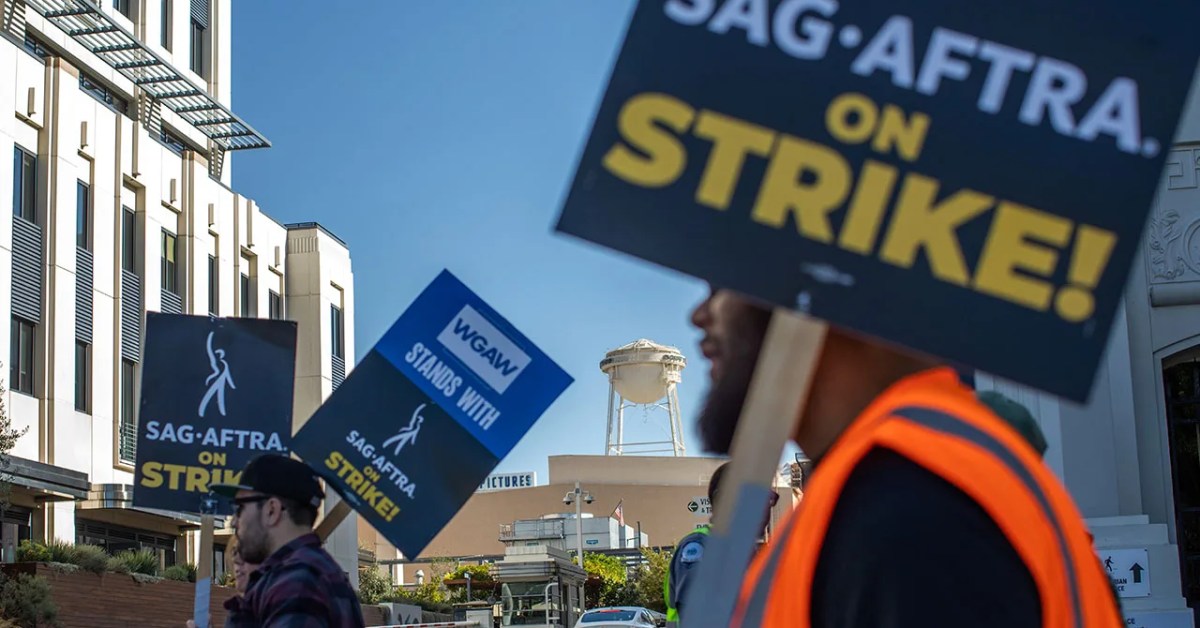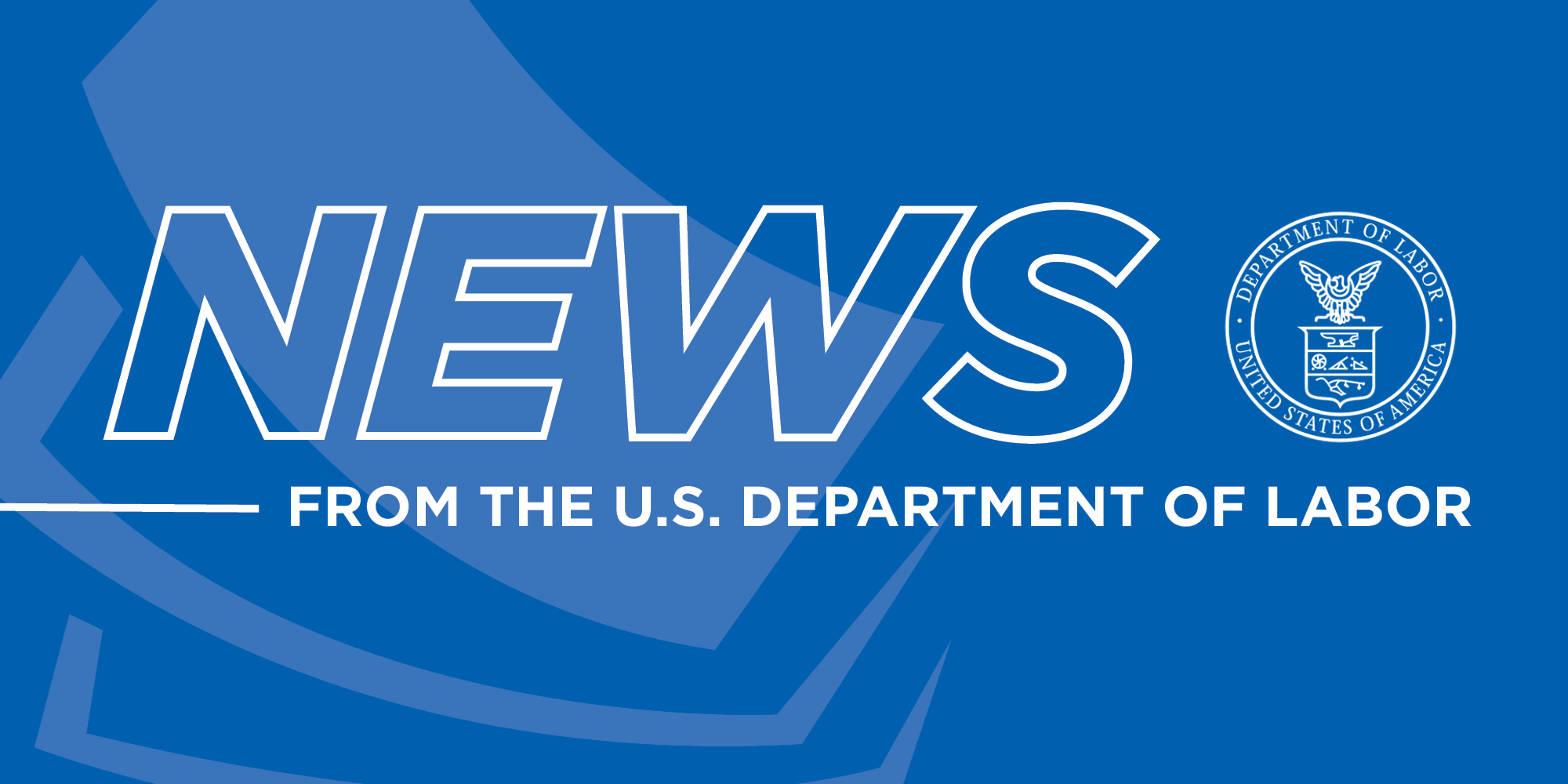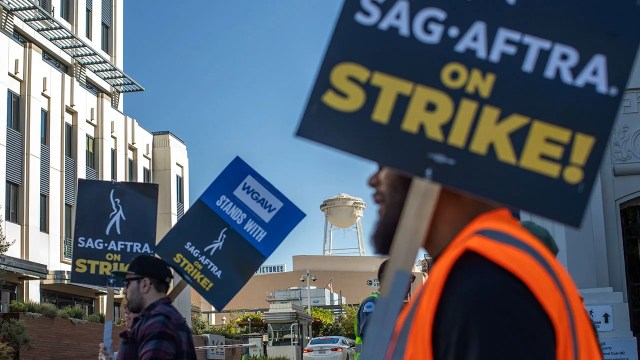
The nearly four-month actors’ strike against major Hollywood production studios in 2023 was the second-largest labor dispute in the United States in at least three decades, according to a Pew Research Center analysis of federal data through Nov. 30.
By the time the strike by the Screen Actors Guild-American Federation of Television and Radio Artists (SAG-AFTRA) ended on Nov. 8, it had idled 160,000 workers for 82 workdays. That resulted in 13,120,000 “days idle,” a metric that the federal Bureau of Labor Statistics (BLS) uses to describe the impact of work stoppages.
Given the spate of high-profile labor disputes in 2023 and what’s been reported as unions’ greater willingness to confront management, we wanted to take a closer look at the history of labor actions in the United States.
Our source for this analysis was the federal Bureau of Labor Statistics’ database of “major work stoppages,” which has summary figures starting in 1947 and detailed monthly information about individual stoppages since 1993. The agency defines as “major” any work stoppage that involves at least 1,000 workers and lasts at least one full shift during the work week. (The term “work stoppage” encompasses both strikes by workers and lockouts by management. The workers involved may or may not be unionized.)
Unless the context indicates otherwise, all of the analyses in this post are based on stoppages beginning in a given calendar year, rather than all stoppages in effect during a calendar year.
When calculating total days idled, the BLS counts only days that employees are normally scheduled to work (Monday through Friday, excluding federal holidays) but don’t work due to a stoppage. The agency adjusts its calculations if the number of workers involved changes during a stoppage.
Since 1993, when the BLS began keeping detailed monthly statistics on major work stoppages, the only labor dispute to have a greater impact was a strike over actors’ pay for appearing in commercials by the then-separate SAG and AFTRA in 2000. (The two unions merged in 2012.) That strike, against the American Association of Advertising Agencies and the Association of National Advertisers, lasted nearly six months, resulting in 17.3 million days idle and, reportedly, considerable bitterness and division among union members.
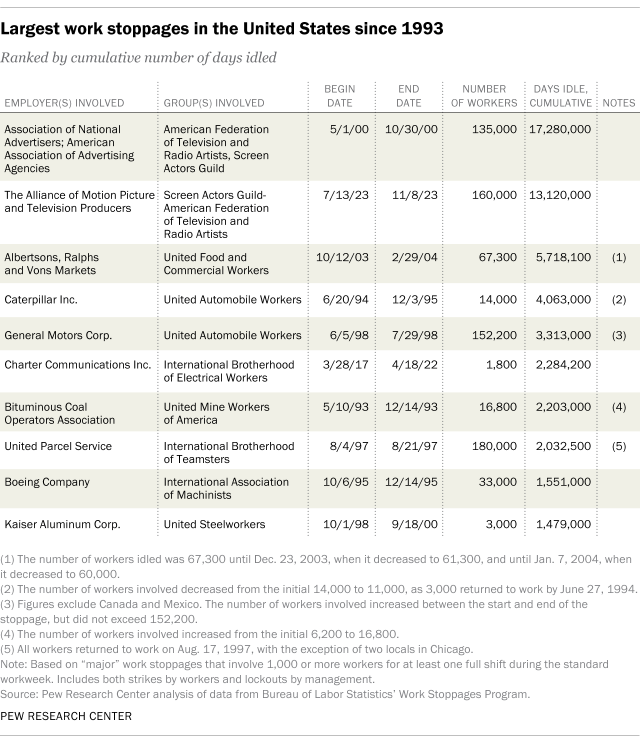
Beyond the SAG-AFTRA strike, 2023 was the most active year overall for major labor disputes in more than two decades, according to our analysis of BLS data on major work stoppages. The BLS defines major stoppages as those involving 1,000 or more workers and lasting at least one full shift during the Monday-Friday work week.
Through the end of November, 30 major stoppages had begun in 2023 – the most of any year since 2000. The 2023 stoppages involved a total of 464,410 workers, the second-most since 1986. And several of last year’s stoppages lasted long enough to generate 16.7 million total days idle, more than any year since 2000.
Besides the SAG-AFTRA strike, other significant stoppages last year included:
- The Writers Guild strike against the same group of production companies (11,500 workers idled for 102 workdays; 1,173,000 days idle)
- The United Auto Workers strike against Ford, General Motors, Mack Trucks and Stellantis (53,700 workers, 43 workdays, 925,900 days idle)
- A strike by a coalition of unions against health care company Kaiser Permanente (75,600 workers, three workdays, 226,800 days idle)
While 2023 stands out against the past few decades for its labor strife, it appears less turbulent if one goes back further in U.S. history.
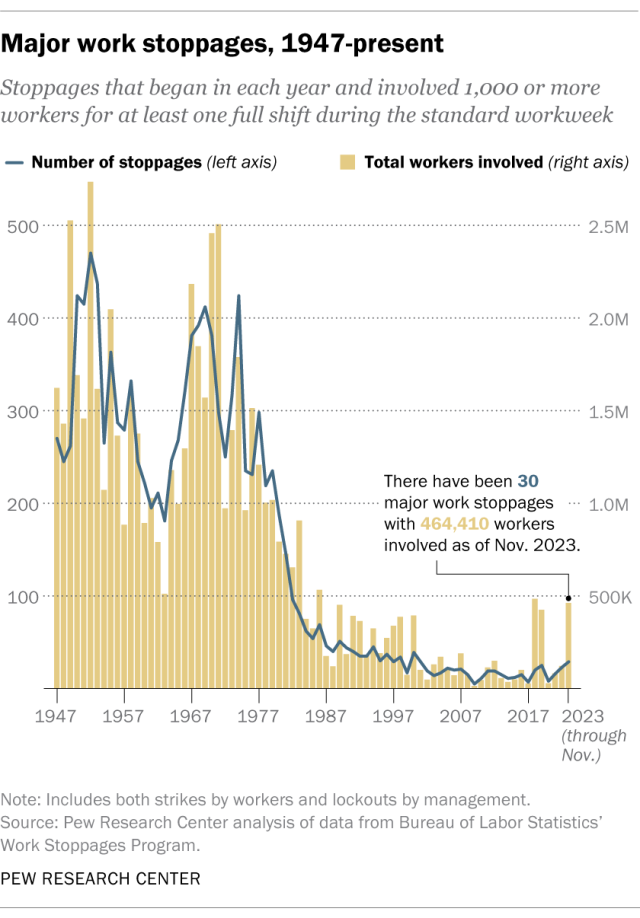
From 1947, the earliest year for which the BLS provides comparable annual data on major work stoppages, through the 1970s, the U.S. routinely experienced hundreds of stoppages a year. Hundreds of thousands or even millions of workers were involved.
The peak was arguably in 1952, when there were 470 major work stoppages involving more than 2.7 million workers. Those stoppages created 48.8 million days idle, the third-most on record. (The top year for days idle was 1959, with 60.9 million, but there were fewer major stoppages that year and fewer workers were involved.)
Whether measured by raw numbers, workers involved or days idle, major work stoppages generally became less common after about 1980 – though not without occasional upsurges. The U.S. economy grew away from its heavily unionized manufacturing sectors, and the federal government under then-President Ronald Reagan turned hostile to organized labor. In 2009, for instance, only five major work stoppages took place, involving a total of just 12,500 workers.
In more recent years, relatively few major stoppages have occurred in traditional manufacturing sectors. From January 2018 through November 2023, just 13 out of 122 major stoppages (11%) involved manufacturing. That compares with 77 out of 176 (44%) between 1993 and 1997.
Instead, major work stoppages in recent years have tended to occurr in two service sectors: education and health care. Nearly two-thirds (65%, or 79 out of 122) of all major stoppages that began between January 2018 and November 2023 were in those two sectors.
The information sector has also seen notable labor actions in recent years. For instance, before the SAG-AFTRA strikes, there was a six-week strike against Verizon in 2016 (36,500 workers involved, 1.2 million days idle) and a strike by 1,800 electrical workers against cable-television giant Charter Communications that started in 2017 and lasted over five years.


